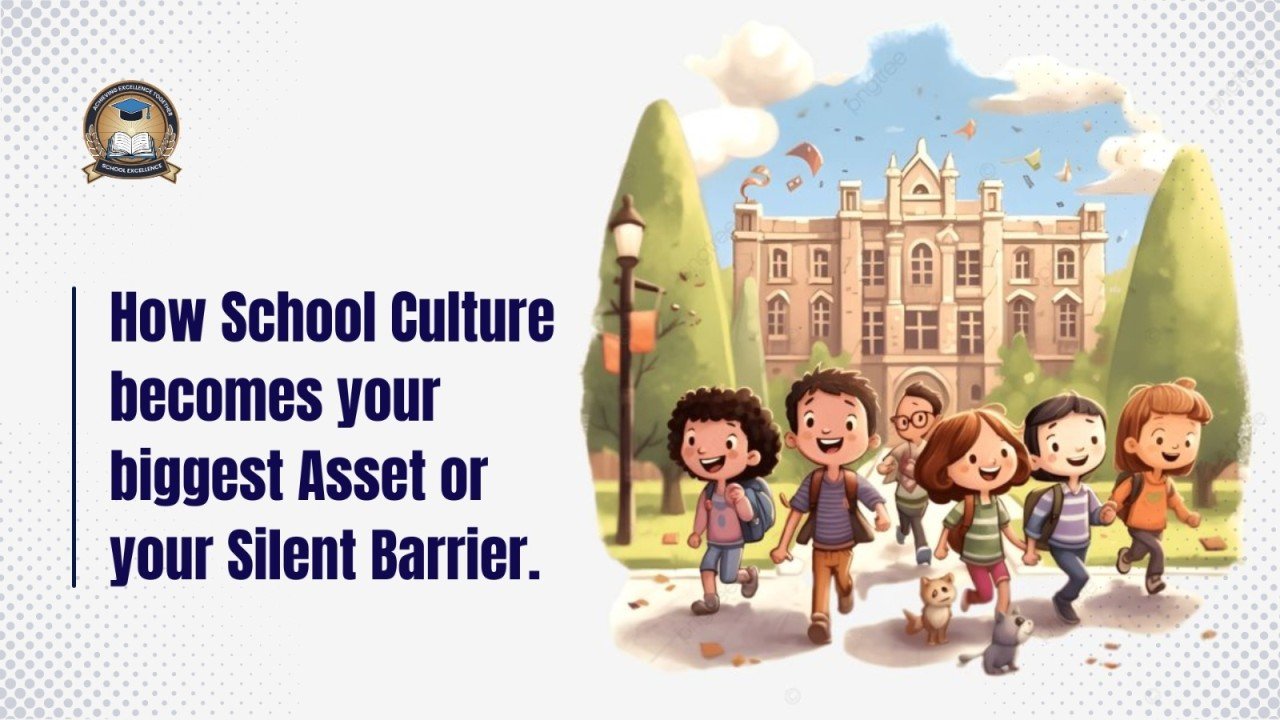How School Culture Becomes Your Biggest Asset or Your Silent Barrier
School culture is often described as “the way things are done around here.” But more than a collection of routines or traditions, it is the invisible force that influences every aspect of a school’s functioning — from student behavior to staff morale, from classroom engagement to long-term success. When nurtured intentionally, culture becomes a school’s greatest asset. Left unchecked, it can become its most limiting barrier.
The Power of a Strong School Culture
A positive school culture fosters collaboration, trust, and shared purpose among teachers, students, and administrators. It’s what motivates teachers to go the extra mile, students to take ownership of their learning, and parents to remain actively engaged. Such a culture doesn’t happen by chance — it’s built through aligned leadership, consistent values, open communication, and meaningful rituals that reinforce the school’s vision.
In high-performing schools, culture is visible in the energy of classrooms, the respect among peers, the support systems in place, and the pride students feel in being part of the institution. It becomes the foundation for academic achievement, innovation, and emotional safety.
The Cost of a Dysfunctional Culture
On the flip side, when school culture is ignored, it can quietly erode performance. Negative behaviors are tolerated, silos form between departments, communication breaks down, and staff morale declines. Students may feel disengaged or unsupported, and even the most well-crafted strategies fail to take root. This silent barrier often goes unnoticed until the consequences — such as high teacher turnover, poor academic results, or low parent satisfaction — become unavoidable.
The greatest danger? A toxic or unclear culture often resists change. Even visionary leaders may struggle to implement improvements if the cultural undercurrent is not aligned with the desired transformation.
How The School Excellence Program Helps Shape Culture
The School Excellence Program, an Eco System, is designed not just to improve academics and operations — but to build a culture of excellence from within. It starts with self-awareness: helping schools identify the current cultural realities through structured feedback, team assessments, and leadership diagnostics.
From there, the program introduces processes and practices that reinforce positive behaviors and mindsets. Whether it’s through collaborative planning systems, regular teacher development workshops, or recognition programs, the goal is to embed excellence into everyday actions.
Importantly, the program aligns leadership practices, communication rhythms, and stakeholder engagement strategies — creating a unified culture that supports growth, innovation, and well-being.
Conclusion: Culture is a Choice
Every school has a culture — whether it’s intentional or accidental. The question is: is it serving your vision or standing in its way?
By consciously shaping culture, schools can unlock extraordinary levels of performance and create environments where everyone thrives. And with the right ecosystem in place — like The School Excellence Program — even schools that feel “stuck” can evolve from good to truly great.

